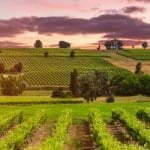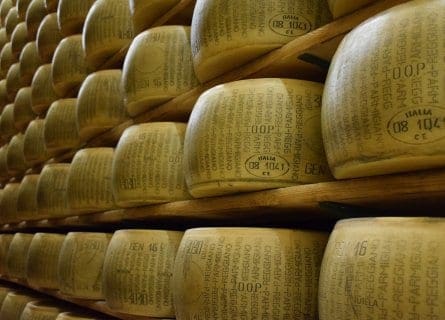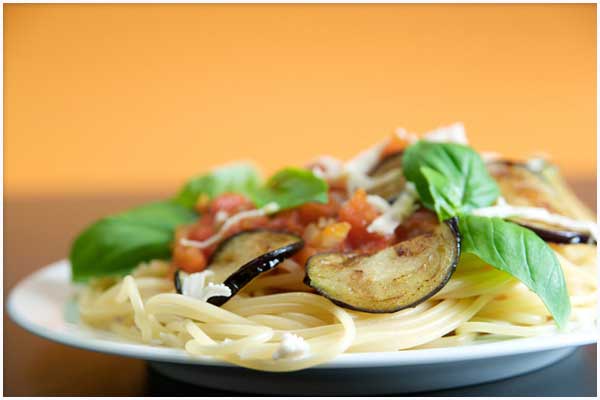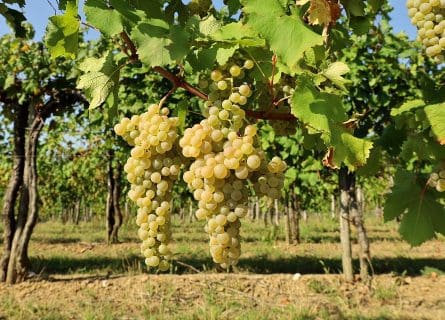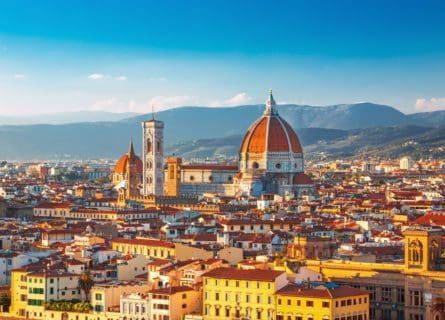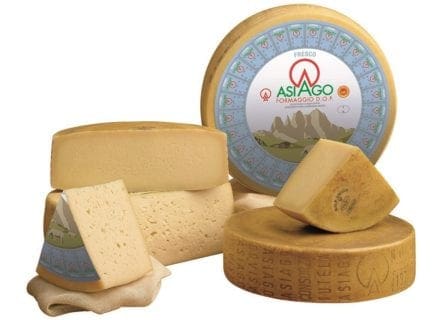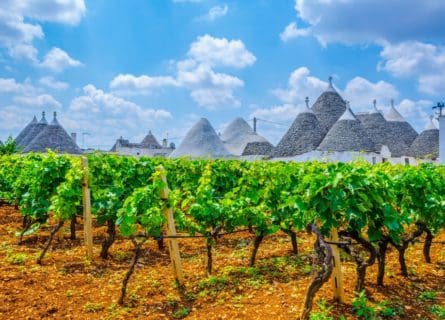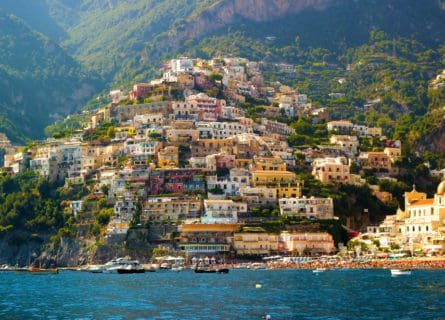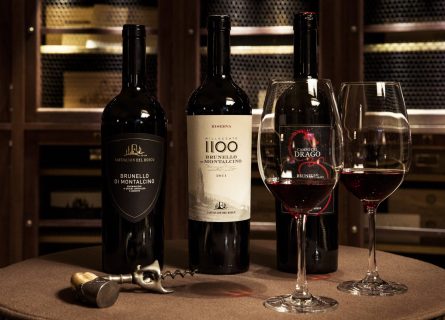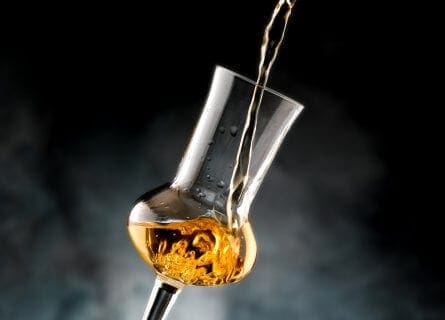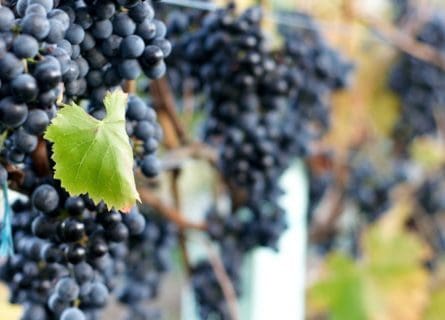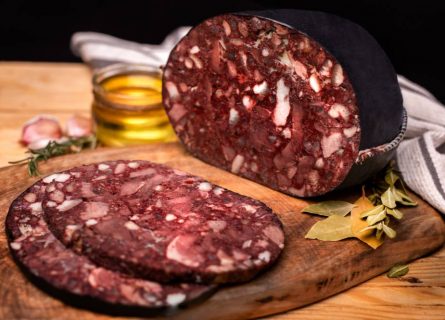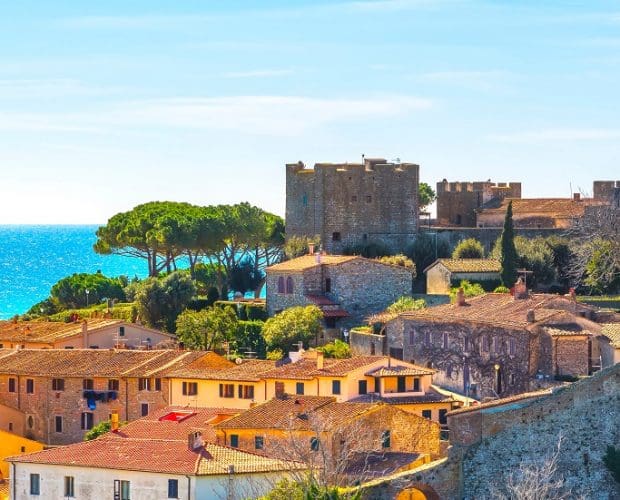
Castello Terriccio Winery Guide
EXPLORE ALL OUR RECOMMENDED ITALIAN WINERIES
Last updated: April 15, 2024
Winery Overview
A vast self-sufficient estate that supported 600 people during its heyday in the 19th century, the exclusive Castello Terriccio Winery extends over 1700 hectares in the northern Tuscan coastal Maremma 60km from the storied city of Pisa. Yes, this is a prestigious winery with coveted reds and vibrant whites acclaimed in top wine circles. Still, it is also a wondrous natural paradise, with fertile fields of wheat, eerily beautiful olive groves with a total of 12,000 trees, a horse-breeding farm, and forestland that’s home to wild hare, boar, hare, partridge, hawk, pheasants, and deer. One of Tuscany’s largest estates, with breathtaking views of the ocean and the islands Elba, Corsica, Capraia, and Gorgona, Castello Terriccio is a fascinating place to visit on an exclusive food and wine tour.
The estate traces its roots back to the Etruscan era when its strategic seaside location proved to be an ideal place to watch pirates heading toward the coast. The ruins of the Terriccio castle, still visible, date to this era. However, the estate’s real history begins in the 13th century, when the Pope acquired it on behalf of the noble Gaetani family, who controlled it for 500 years, creating a successful farm and building the farmhouses and cellar that still stand today. In the late 1700s, the Gaetani sold the estate to a Polish prince, who sold it to the present owner’s family (Dr. Gian Annibale Rossi di Medelana Serafini Ferri) in 1921.
In 1979, Serafini Ferri suffered a severe horseback riding accident that left him in a wheelchair, and he began to focus on the estate’s potential as a winery; high-quality winemaking started in the late 1980s and early 1990s when varieties like Sangiovese, Cabernet Sauvignon, Merlot, Chardonnay, and Sauvignon Blanc were planted successfully.
The dense, robust reds and tantalizing whites made here have found favor in the international wine community and are praised for being pure reflections of their terroir. They are often described with words like “superlative,” “tremendous,” “splendid,” and “luscious.” Castello Terriccio’s most iconic wine is the renowned super Tuscan Lupicaia, grown in limestone soil in an area once known as the wolves’ favorite hunting ground. This Cabernet Sauvignon blend melds lusciously rich fruit with spicy balsamic notes. Also wonderful is the Castello del Terriccio, a complex wine with a striking ruby tone, herb-like aromas that blend with spicy notes of licorice and cinnamon, and incredible depth. The estate’s white wines are known for being unabashedly expressive, clean creations. Harvest for all wines is done by hand across the estate’s 50 hectares of vineyards. Yields are kept low (no more than 900g per vine) to ensure concentrated fruit and better-structured wines.
Wines produced
-
Rondinaia
100% Chardonnay; stainless steel; 13% alcohol. -
Tassinaia
33% Sangiovese, 33% Cabernet Sauvignon, 33% Merlot; aged 14 months in French barrique; 14% alcohol. -
Con Vento
100% Sauvignon Blanc; stainless steel; 13% alcohol. -
Capannino
100% Sangiovese; stainless steel; 13% alcohol. -
Castello del Terriccio
50% Syrah, 25% Petit Verdot, 25% other varieties; aged 18 months in French barrique; 14% alcohol. -
Lupicaia
85% Cabernet Sauvignon, 10% Merlot, 5% Petit Verdot, aged 18 months in French barrique; 14% alcohol.
Winery Contact Details
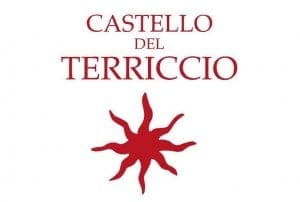
Castello Terriccio
Località Terriccio56040 - Castellina Marittima (PI)
Italy
Email: [email protected]
Tel +39 050 699709
Fax +39 050 699789 Find out more
Facts & Figures
Appellation
I.G.T. Toscana (Indicazione Geografica Tipica Toscana)
Founded
1990s
Area under Vine
60 hectares
Age of vines
8-15 years old
Oak barrel origin
French oak barrels from Allier, France are used for the three top red wines: Lupicaia, Castello del Terriccio and Tassinaia
Winemaker
Carlo Ferrini (red wines) and Giovanni Passoni (cellar master and winemaker of the white wines)
Owner
Dr. Gian Annibale Rossi di Medelana Serafini Ferri
Production
200,000 bottles
Grape varietals
Chardonnay, Sauvignon Blanc, Viognier, Sangiovese, Cabernet Sauvignon, Merlot, Petit Verdot, Mourvèdre, Syrah
Grape Varieties Used by the Winery
-
Chardonnay
Chardonnay is a green-skinned grape varietal native to the Burgundy wine region in France and one of the most popular varieties worldwide.
Find out more -
Sauvignon Blanc
The sauvignon blanc grape varietal, originally from the Bordeaux region of France, is now one of the world's most loved white varieties.
Find out more -
Viognier
Viognier comes from the northern Rhône valley AOC of Condrieu and is where its most famous white wines are produced.
Find out more -
Cabernet Sauvignon
Discover the irresistible allure of Cabernet Sauvignon—a worldwide favorite with robust, dark-bodied flavor. Unleash your wine journey today!
Find out more -
Merlot
Merlot is the most cultivated grape in Bordeaux and closely related to Cabernet Franc
Find out more -
Mourvèdre
Mourvèdre is a red wine grape variety of mysterious origin that's grown around the world, including the Rhone and Provence regions of France.
Find out more -
Petit Verdot
Petit Verdot is a full-bodied red wine grape varietal used in classic Bordeaux blends and originates in southwestern France
Find out more -
Syrah
Syrah is dark-skinned and perhaps the most underrated of the 'noble' red grape varieties.
Find out more
Winery Appellations
-
 Sassicaia, Ornellaia, Tignanello; these mythical wines are known as 'Super Tuscans' and they come from the beautiful coastal Maremma region. Read more
Sassicaia, Ornellaia, Tignanello; these mythical wines are known as 'Super Tuscans' and they come from the beautiful coastal Maremma region. Read more
Further Reading: Discover More Related Blog Content
More information
If you would like us to customize an exclusive luxury tour, contact us and let us know your travel plans. We offer luxury food and wine tours for private groups of a mininium two guests. In addition, all of our private, chauffeured tours are available year-round upon request.

